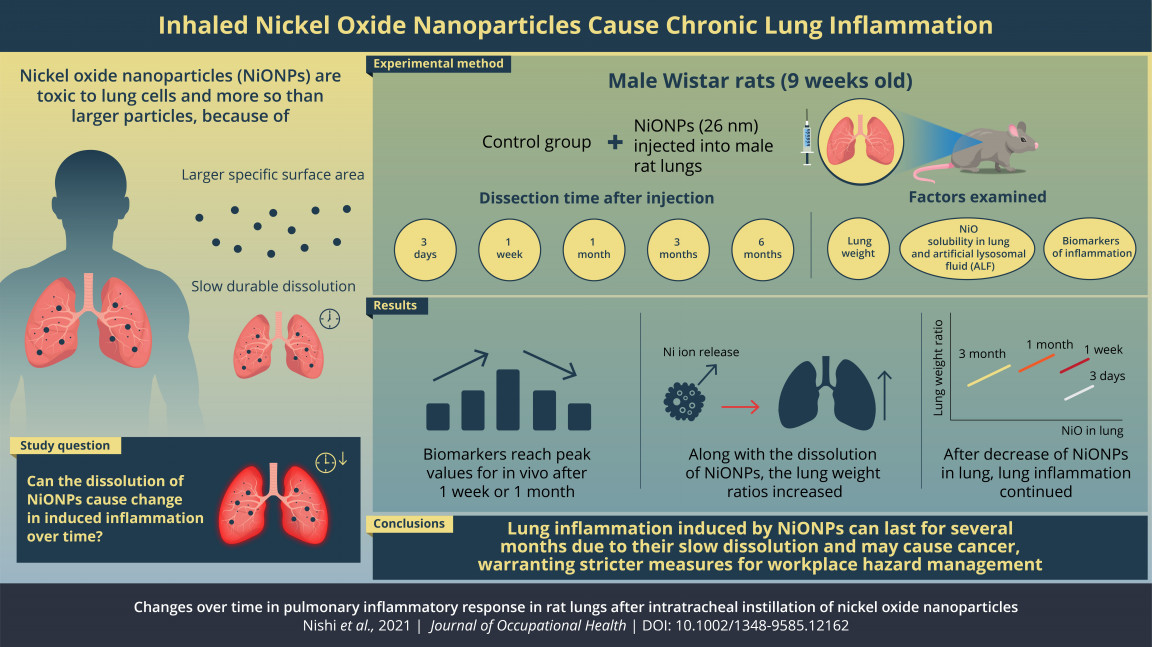#0007 The Deleterious Health Effects of Nickel Oxide Nanoparticles

Nickel oxide (NiO) is a widely-used compound in manufacturing and its nanoparticles (NPs) in particular are used to make batteries and additives. Exposure to NiO is toxic and since nanoparticles have a large total surface area per unit of their mass, it has been speculated that nickel oxide nanoparticles (NiONPs), which are water insoluble, could stay lodged in the lung and generate a stronger and lengthier inflammatory response in the body than typical micron-sized particles.
To understand how NiONPs affect changes in the body over time, we conducted two experiments: 1) we inserted either 0.1 mg or 0.2 mg of NiONPs in a water solution directly into the trachea (windpipe) of rats and 2) we studied the dissolving rate of various nickel oxide compounds—ranging from nano-sized to micron-sized particles—in an artificial lysosomal fluid (ALF).
We found that the nanoparticles remained in the rat lungs three months after their insertion into the trachea. Both the 0.1 mg and 0.2 mg rats showed an increase in lung weight, a sure sign of pulmonary inflammation. The biological effects, such as an increase in lung mass, became more pronounced as time went on, which could indicate that NiO mass increased in the lung over time, suggesting that the smaller the particles, the greater the effect.
The NiONPs in the ALF, which is acidic and has a pH of 4.5, were found to have dissolved and increased the pH to seven after one week. In vivo they dissolved more slowly and took a month or more. As a consequence, the inflammation biomarkers reached a peak at one month after exposure, and not 3 days, as is usually the case.
Our research suggests that nickel oxide can dissolve in acidic conditions if its particles are nano-sized. Furthermore, since white blood cells like alveolar macrophages transformed into proinflammatory foamy cells after one month of exposure to NiONPs, we believe this potentially enabled the conditions for a persistent inflammatory response even at three months. This can have serious health consequences since chronic lung inflammation can lead to the creation of tumors and other negative health effects. Hence, any workplace exposure to metal compounds like nickel must be strictly monitored and safeguarded against.

Link to the original journal article:
https://onlinelibrary.wiley.com/doi/10.1002/1348-9585.12162
Title of the journal article:
Changes over time in pulmonary inflammatory response in rat lungs after intratracheal instillation of nickel oxide nanoparticles
Authors:
Ken-ichiro Nishi, Chikara Kadoya, Akira Ogami, Takako Oyabu, Yasuo Morimoto, Susumu Ueno, Toshihiko Myojo




